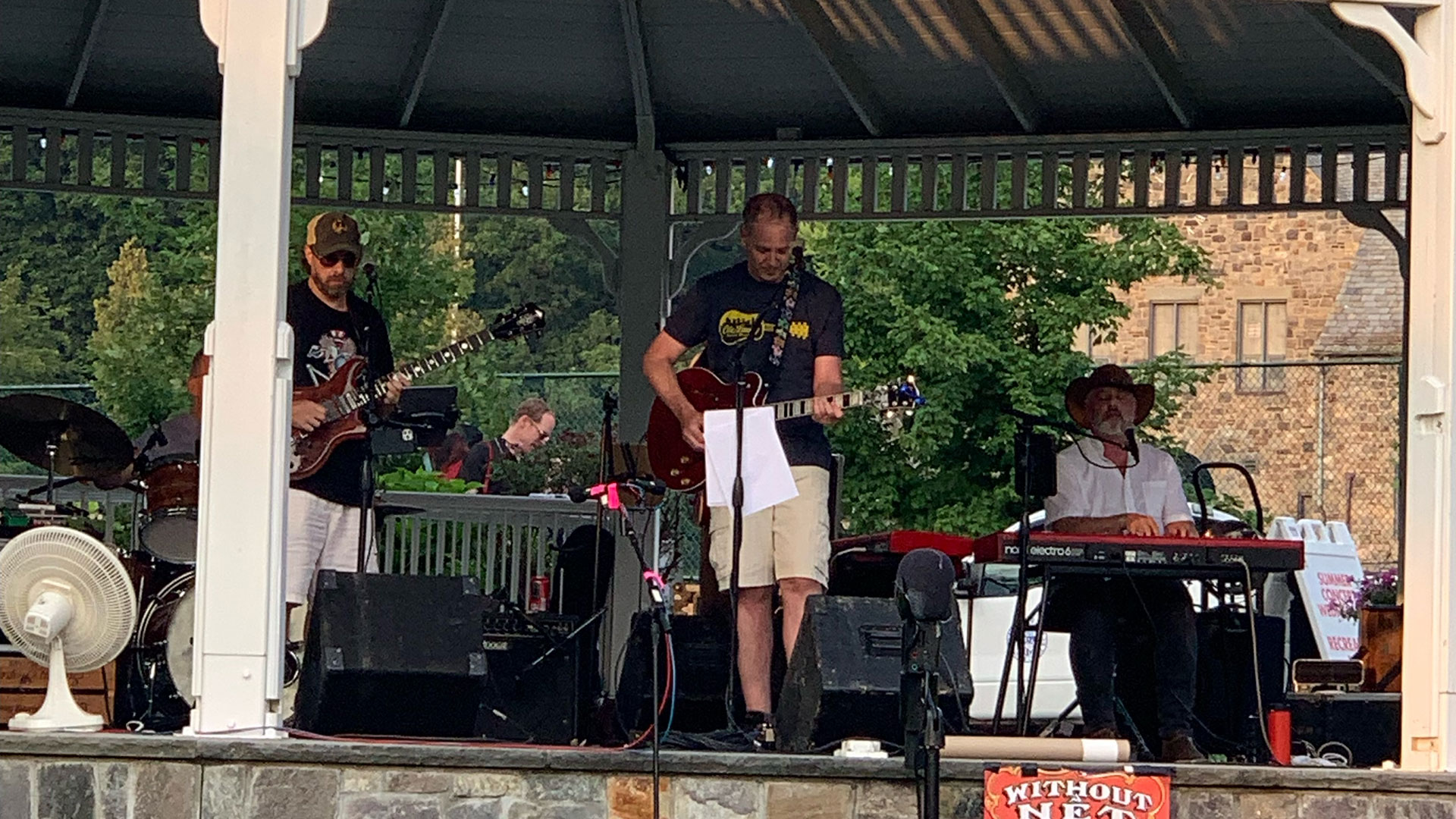He was told that the security code for a supply closet was the year of Jerry Garcia’s death, a surprise to Dr. Thomas Ullman, a devoted Grateful Dead fan. But it was more of a surprise to his colleague, Dr. Benjamin Galen, when Dr. Ullman, without so much as a pause, recited the year. Both didn’t expect to encounter another *Deadhead. And both became fast friends.
 Dr. Ullman performing.
Dr. Ullman performing.
He was introduced to the band’s music by his older cousin Andy when he was in middle school, but it wasn’t until attending his first Grateful Dead concert as a sophomore in college that he became what was to be a lifelong fan. By then he had played in a few high school and college bands. But hearing the Grateful Dead perform provided new inspiration.
“I was always a big music fan,” says Dr. Ullman, who is the chief of the division of gastroenterology in the department of medicine. “I became really taken with the Grateful Dead’s music and the many styles they drew from, including traditional folk, bluegrass, country, blues, R&B, and soul,” he adds. “There is a different vibe to their concerts. They never performed by rote. Every concert was different and their approach to letting songs breathe with improvisational space within and between songs held great appeal. With hundreds of songs in their repertoire, you could hear any combination of them but you never knew what they would play or how, and on many occasions their performances brought them to places other bands couldn’t go.”
Fast forward a few decades. Fellow musician Josh Dolgin, who Dr. Ullman plays guitar and sings with from time to time in Chappaqua, offered him a spot in his band when their regular rhythm guitarist and vocalist couldn’t make a gig. So last month Dr. Ullman was the substitute guitarist and singer for the Grateful Dead tribute band, Without a Net, that played in the New Castle Summer Music Series in Chappaqua (tie-dye was optional). The band played for more than two hours, covering such Dead staples as “Sugaree,” “China Cat Sunflower/I Know You Rider,” “Scarlet Begonias,” Bob Dylan’s “When I Paint My Masterpiece,” and a dozen others. “It was a dream come true,” says Dr. Ullman. “The band was hot, and it was incredibly special to see the all-ages crowd including my wife, two of my daughters, my mother, and a couple hundred other neighbors, friends, and family members smiling, dancing, and singing along to what we were playing.”
Musical Backstory
Dr. Ullman’s interest in music began early, starting with guitar lessons at age eight. But it was in high school where he became more serious about it and joined a small acoustic band. At the time, he was regularly playing guitar in some fashion, mostly self-teaching some elements of repertoire.
By college, it seemed that music might have been put on the backburner…until that Grateful Dead concert. Dr. Ullman became part of the campus music scene at Brown University playing guitar and doing backup vocals in a couple of bands with names like Courageous Cat and Indiana Dog. At that point, he also picked up some bass, something bands are always in need of. He even had a regular solo act where, legend has it, at one campus club he broke the record for most alcohol sold on a weeknight – hence the regular gig.
Some pretty impressive singer-songwriters came out of the Brown music scene during those years, including Lisa Loeb and popular Lilith Fair headliner Catie Curtis who had been a singer and drummer in Courageous Cat.
In medical school at Cornell, he was in a band with three M.D./Ph.D. students called Tommy and the Mud Fuds, though the real frontman was Dr. Hearn Cho who would go on to become a respected oncologist. They regularly played Friday night happy hours at the dorm, but, according to Dr. Ullman, “Mostly we were playing to the wild dancing of Dr. Joshua Nosanchuk, now senior associate dean for medical education at Einstein and member of the department of medicine’s division of infectious diseases, who is singlehandedly the best audience member any band could ever have.”
Reflecting Again on the Grateful Dead and the “Deadheads” Among Us
“We’re everywhere,” says Dr. Ullman, referring to fans of the Grateful Dead. “We are doctors, teachers, maintenance workers, bus drivers, and a new generation of teens discovering the band. Even Jerome Powell, chair of the Federal Reserve Bank, is a die-hard Grateful Dead fan and said as much in recent Congressional testimony in response to a question from a Deadhead Congressman.
“There is something special about the fan base and about the band’s approach and execution that remains vibrant in our society nearly 60 years since the band was formed. That’s very inspiring. For me, it solidified my interest in playing and performing these extraordinary songs, which has been so important at every stage of my adult life.”
[*Disclaimer: The name “Deadhead” originated in the 1970s and referred to the tie-dye wearing fans who followed the band from gig to gig. Informally, it has been used to affectionately describe loyal Grateful Dead fans. Dr. Ullman is the latter – and he doesn’t wear tie-dye.]
Posted on: Wednesday, August 16, 2023